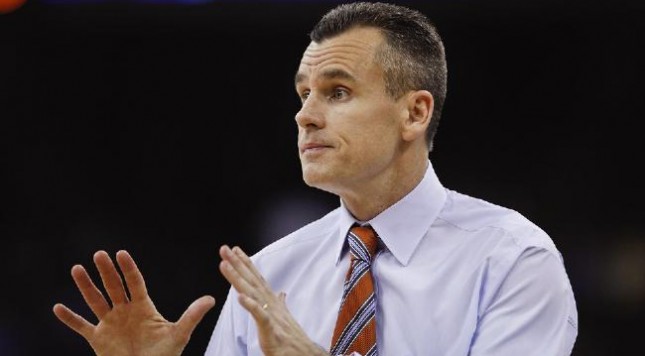In the wake of the free-agent frenzy we witnessed over this Fourth of July weekend — the Houston Rockets’ red glare at the San Antonio Spurs, the Woj bombs bursting in air — it’s worth noting both the similarities and differences between two of the top contenders in the 2015-2016 Western Conference.
The Spurs are the Spurs, making splashes left and right while moving to build up their roster. However, the two teams that might very well chase San Antonio this season are teams that made very few moves during free agency. If the Spurs were movers, the Oklahoma City Thunder and Golden State Warriors were statues. We’ll explore the differences between these two teams in a separate piece, but for now, let’s look at some of the many ways in which these franchises face similar positions after free agency.
The first commonality shared by these teams, following the past several days, is that they exist in noticeably weak divisions. Whereas the Southwest Division is once again a Murderer’s Row, and has a very good chance of putting all five of its teams in the playoffs (again), the Pacific and Northwest divisions are tissue-thin. The Los Angeles Clippers, Phoenix Suns, Utah Jazz, and Portland Trail Blazers should all compete for playoff spots, but they’re all likely to compete at the lower end of the Western Conference’s eight-team playoff chase. The Southwest should get at least three of the top five West slots next season, with Golden State and Oklahoma City being the other teams in that five-team mix.
Since playoff seedings will have no connection to divisional championships this season, Golden State and Oklahoma City won’t get protected seedings. However, since they play in weaker divisions, they’ll both have opportunities to rack up lots of wins against their geographical neighbors.
Moreover, they’ll need to.
With the Spurs being a strong candidate for a top seed, Golden State and OKC face the very real prospect of having to play the Spurs in round two of the playoffs, should either team fall into the 4-5 first-round matchup. Another possibility to consider is that GSW and OKC could face each other in the West’s 2-3 second-round series. They’d avoid the Spurs, but they might have to play each other.
If they do, they’ll be looking in the mirror at each other.
Consider:
Much as Golden State had a first-year NBA coach last season, Oklahoma City will take the court with a first-year NBA coach this season. Billy Donovan will try to travel the path Steve Kerr carved out, and whereas Kerr was a complete newbie to coaching, Donovan has established himself as a Hall of Fame-level college coach. (He will be inducted one day.) Rookie coaches winning NBA titles in consecutive seasons? If Donovan finds the right answers, it could happen.
In terms of the style of play employed by each team, the Warriors and Thunder are more similar than opposite. Jump shooting is central, not peripheral, to each team’s offense. Dumping the ball into the low post is what’s peripheral and occasional. Quickness and floor spacing, with multiple stars carrying the scoring load, create possibilities for each team at the offensive end of the floor.
Role players making timely contributions when the stars (the Splash Brothers for Golden State, Kevin Durant and Russell Westbrook for OKC) are being contained will be a necessity in the playoffs. You saw Andre Iguodala hit jumpers to relieve pressure on the Warriors’ offense in the NBA Finals. Dion Waiters and other players in the OKC rotation will have to hit an appreciable percentage of shots if the Thunder are going to go as far as they hope to.
One other stylistic connection between these teams emerges at the other end of the floor: Draymond Green (Warriors) and Serge Ibaka (Thunder) are the versatile interior players who lend integrity and coherence to each team’s defensive structure. These are not what you’d generally refer to as bruising defensive teams; they’re teams that both depend on positioning and activity to unsettle the opposition… and they’re not going to expect to hold teams in the 80s or very low 90s in order to win.
One other primary similarity shared by these teams is that they maximize home-court advantage. The Thunder’s 2015 season was hijacked by injuries, but in 2013 and 2014, when Oklahoma City made it through the regular season without too many (severe) problems — Westbrook’s season-damaging 2013 injury occurred in the playoffs — the Thunder went 34-7 both years. Golden State went 39-2 at home during the 2015 regular season and went 9-2 at home in the playoffs. When you realize that Golden State should be able to fare a lot better against the Los Angeles Clippers, and that OKC should be able to do a lot more damage against the Portland Trail Blazers, these two teams should be able to mop up in their divisions in general. Being able to pick off every home game in their divisions, and almost every home game against Southwest Division teams, should enable the Warriors and Thunder to win around 35 home games next season.

